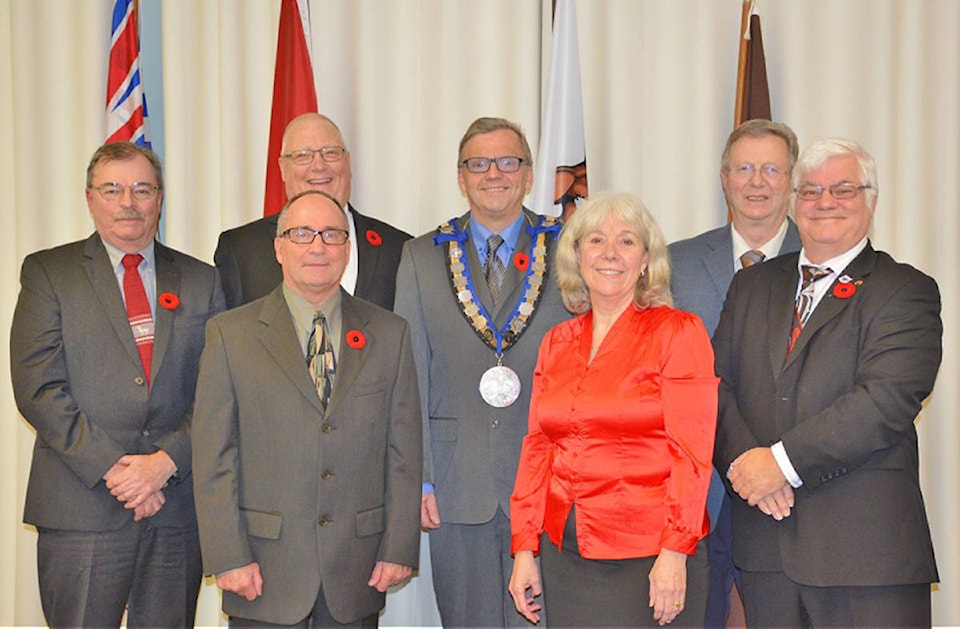The future of marijuana in Port Hardy was examined at the first marijuana advisory planning committee meeting.
Nine community members participated in the meeting, including chair and Port Hardy Coun. Leightan Wishart, RCMP Staff Sgt. Wes Olsen, and Elizabeth Aman-Hume Director of Port Hardy Chamber of Commerce, in the district council chambers on Aug. 23.
“I am very much interested in this on a business level,” said Serena Neumerschitsky, a new Port Hardy resident who volunteered to be Deputy Chair of the committee.
“I think that if we work together and create a business we can look at that as something giving back to the community.”
Wishart also clarified the direction of the meeting. “The purpose of this committee is to make a recommendation to council and it’s going to be council’s decision in the end,” said Wishart, adding Mayor Hank Bood felt he should form the committee to gather information from the public.
Three areas were discussed at the meeting, including buffer zones - meaning where dispensaries will be allowed, the number of dispensaries allowed, and mixed use zoning, i.e. whether they can be combined with other businesses.
Within an hour, the committee had come to a consensus on all three topics of discussion.
They recommended 100m buffer zone from schools and playgrounds, a limit of two dispensaries, and no mixed use zoning.
“We know the feds are doing this, but the province has been mute - the issue is we are trying to be proactive,” said Heather Nelson-Smith, District of Port Hardy Director of Corporate Services, who facilitated the meeting.
Olsen agreed, stating “this is all speculation until the government comes out and spells out what this is going to entail - we are trying to be proactive in the fact that if they don’t have those conditions we can talk about where we want to have it in our community.”
The committee mentioned Cumberland as a model or reference point. Cumberland allows a limit of two dispensaries under a temporary use license, which must be located in a specific block in their downtown core on Dunsmuir Avenue, and they do not allow mix-use zoning.
A discussion of the number of dispensaries to be allowed followed. “In a town as small as ours, we don’t need that many dispensaries,” said committee member Dave Johnson.
“Being a business in Port Hardy for as long as I have, it’s pretty difficult in general - if you spread it out to 10, or even six, no one is going to be successful,” said Bruce Dirom, owner of Hardy Buoys Smoked Fish. “If you want it as a stand alone business, you have to have fewer of them so it can be successful.”
Nelson-Smith also mentioned Port Alberni, who said dispensaries cannot be combined with any other business.
“The reason is they didn’t want them to have them all over the place, they didn’t want someone with a clothing store to suddenly say ‘oh I sell pot on the side,’” said Nelson-Smith.
After the committee ruled in favour of stand alone dispensaries and against mixed-use zoning, the topic of consumption was then addressed.
“If you are going to say you can’t smoke anywhere outside, but you are going to sell it, give the people a place to go,” said Neumerschitsky.
“If we stay really open minded about things like a vape lounge, where someone can go buy and smoke, we can really dominate the tourism industry.”
Staff Sgt. Wes Olsen noted another consideration.
“I’d like to see how the law plays out on the vape lounge - that becomes like a licensed beverage room where you can consume liquor and that’s provincially regulated,” he said, adding “It’s like the wild west, because as soon as the starting gun goes off it’s going to be a big race, and the regulations are going to have to catch up.”
The committee compromised, deciding to recommend testing on-site rather than a lounge that would allow people to stay for lengthy periods of time.
The 100m buffer zone away from schools and playgrounds would also likely place zoning for dispensaries within the southern end of Market street.
Nelson-Smith said the next step for the committee is to compile questions to be included in a survey which will be sent out to the businesses on Market street, as well as the rest of the community in order to receive feedback on the committee’s recommendations.
